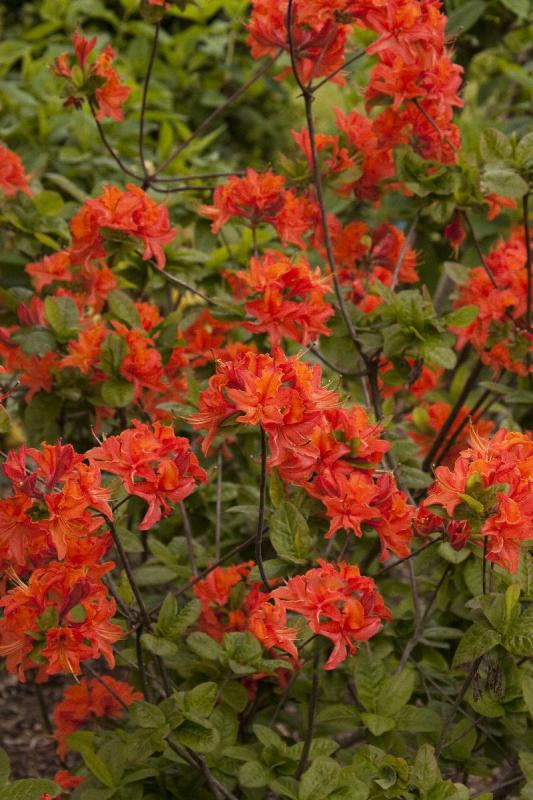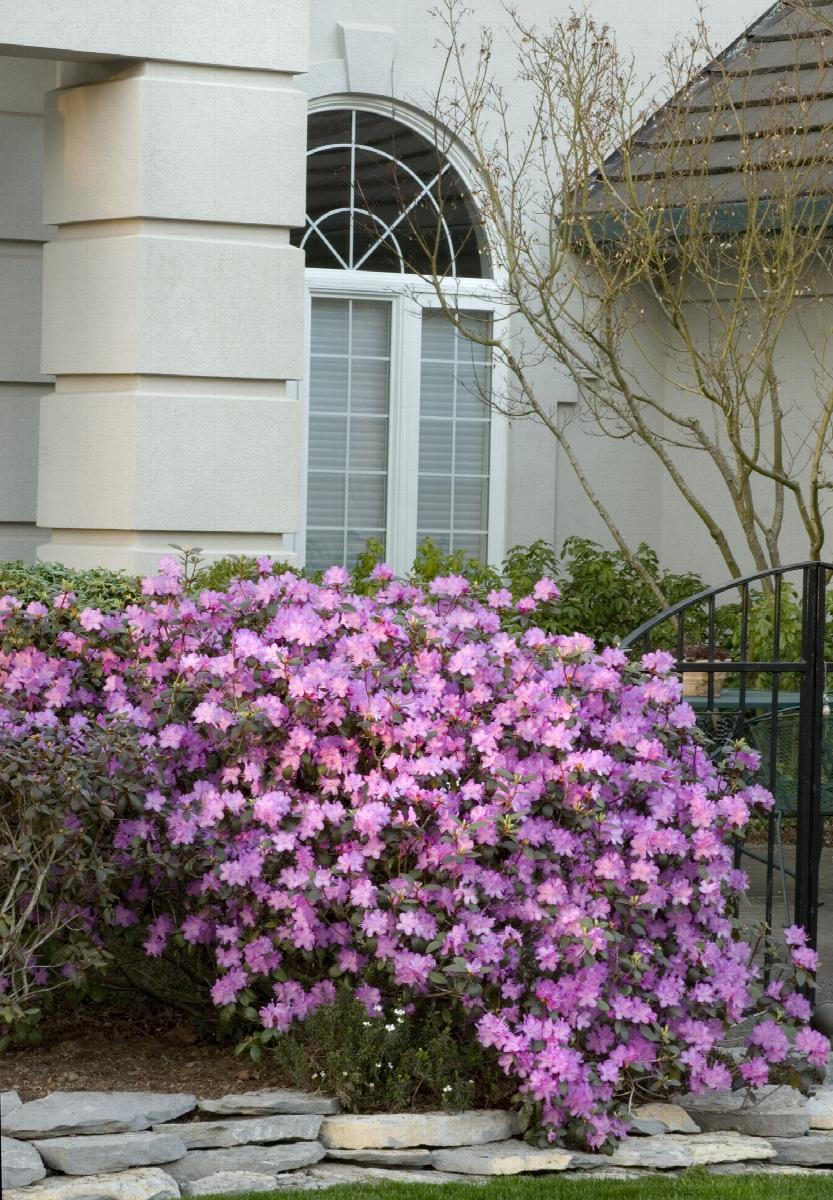
Rhododendrons and azaleas are beautiful flowering shrubs, putting on a spectacular show in spring when they bloom. They are best adapted to eastern and southern regions of the United States with moderate winter temperatures and consistent rainfall.
But there are some cultivars which can perform well in a Nebraska landscape, given good care and careful siting. Below are two of the most winter hardy azalea and rhododendron lines.

- Northern Lights azalea series – developed by the University of Minnesota. Plants in this series have flower buds hardy to -30 or -40° F. There are many colors to choose from such as ‘Mandarin Lights’, ‘Lemon Lights’ or ‘White Lights’.
- PJM rhododendrons, developed by Peter J. Mezitt with Weston Nursery in Hopkinton, MA, have evergreen foliage and flower buds cold hardy to -30° F. Look for ‘PJM’, ‘PJM Compact’ or ‘PJM Regal’ along with several others in the series.
Site Selection
Choose a location with morning sun and afternoon shade, avoiding exposed windy sites. Desiccation of rhododendron evergreen foliage can easily happen in winter if plants are exposed to strong winds and bright sunlight. Rhododendrons and azaleas prefer well-drained soil, with a good level of organic matter and soil pH between 4.0 to 5.5. Keep in mind, soils in eastern Nebraska typically have a pH between 6.5-7.5 or above.
Perform a soil test before planting and use agricultural sulfur to lower the soil pH. Refer to Fertilizers for Vegetables in Home Gardens for guidelines on lowering soil pH. To prepare the planting site, amend the bed - not just the planting hole - with organic matter if the existing soil is heavy to improve the environment for root growth.
 The two winter enemies of evergreen rhododendrons and azaleas are sun and cold wind. If hardy types are selected and proper planting locations are chosen, little or no winter protection is needed. If existing plants show winter damage, protection will be needed.
The two winter enemies of evergreen rhododendrons and azaleas are sun and cold wind. If hardy types are selected and proper planting locations are chosen, little or no winter protection is needed. If existing plants show winter damage, protection will be needed.
Care
Rhododendrons and azaleas require little care once they are established. A good heavy mulch will conserve moisture and keep down weeds. No cultivation should be done because the shallow, fine roots are easily damaged.
Avoid using general garden fertilizers for rhododendrons, azaleas and other acid-loving plants. Use those specially formulated for acid-loving plants and follow directions. Fertilization should be done carefully, or the fine, delicate roots close to the soil surface will be damaged. A fertilizer analysis similar to 6-10-4 applied at 2 pounds per 100 square feet to the soil surface is usually adequate.
Fertilizing should be done in May, but do not fertilize after July 1. Late summer fertilization may force new growth that will be killed by the winter.
Soil acidity must be maintained to ensure good growth, so periodic soil testing is necessary. If the soil pH creeps back above 5.5, apply iron sulfate or agricultural sulfur to the surface of the soil. The amount to apply will depend on the existing pH, but in all cases apply only a small amount at any one time.
The thickness of the mulch (2-3 inches) must be maintained. As the old mulch decomposes, add new mulch. This is best done in the late fall.
Watering
Many rhododendrons are killed by overwatering in sites where drainage is bad. Check the soil before watering. Avoid excessive irrigation in fall. Plants kept dry in September will tend to harden off and be better prepared for the winter. If the fall has been excessively dry, watering should be done after the first killing frost.
Pruning
There is little need for pruning azaleas and rhododendrons. If growth becomes excessive, reduce the size with light pruning to reshape the plant. Prune out any winter damage in spring after new growth has begun.
However, it is important to remove the flower stems on rhododendrons as soon as flowering is complete. Failure to do this will reduce flowering the following year. Break out only the dead flower cluster, not the young buds clustered at its base.